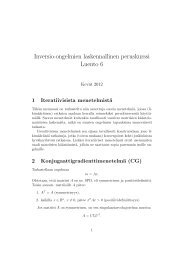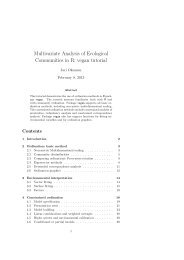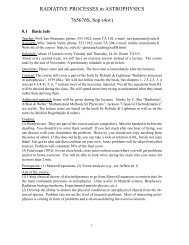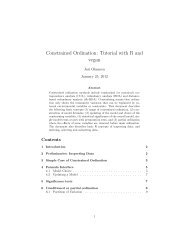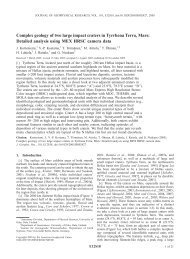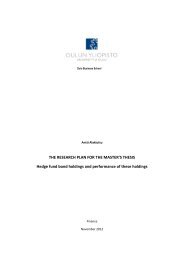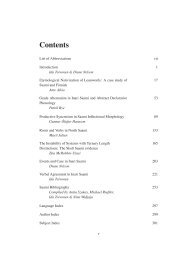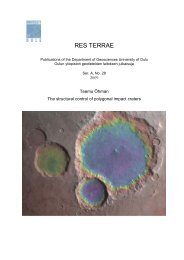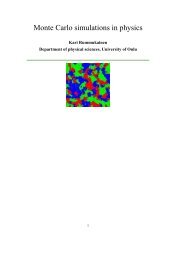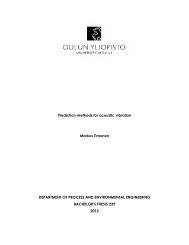Juha Köykkä - Oulu
Juha Köykkä - Oulu
Juha Köykkä - Oulu
- TAGS
- juha
- oulu
- cc.oulu.fi
You also want an ePaper? Increase the reach of your titles
YUMPU automatically turns print PDFs into web optimized ePapers that Google loves.
Res Terrae, Ser. A 32, J. <strong>Köykkä</strong>, Sedimentology of the Mesoproterozoic Telemark basin-fills, South Norway: implications for<br />
sedimentation processes, depositional environments and tectonic evolution<br />
rates of rise drop below sedimentation rates; aggradational and progradational stacking<br />
patterns). These system tracts controlled by a combination of autogenic and allogenic<br />
processes, and which are interpreted based on strata stacking patterns, position within<br />
the sequence, and types of bounding surfaces. These processes determine the distribu-<br />
tion of depositional elements within systems as well as large-scale stacking patterns of<br />
depositional systems within each system track. Not all the system tracts need be<br />
present in each sequence either because the shape of the base level curve did not allow<br />
one or more system tracts to form, or because subsequent erosion.<br />
During the full base-level cycle, four main events can be recognized which control<br />
the timing of formation of all sequence stratigraphic surfaces and systems tracts (Fig. 6):<br />
(i) onset of forced regression (onset of base-level fall at the shoreline); (ii) end of forced<br />
regression (end of base-level fall at the shoreline); (iii) end of regression (during base level<br />
rise at the shoreline); and (iv) end of transgression (during base-level rise at the shoreline).<br />
The expression in the rock record of each one of the four events of the base-level cycle<br />
may vary from mappable to cryptic, depending on depositional setting, tectonic set-<br />
ting, and the type(s) of data available for analysis. In addition, seven sequence strati-<br />
graphic surfaces are defined relative to the four main events of the base-level cycle,<br />
and the recognition of these surfaces in the rock record is data dependent.<br />
In this thesis, the workflow of the sequence stratigraphy analysis was to first identi-<br />
fy the genetic units and bounding surfaces that compose the lithostratigraphic section<br />
in the outcrop. In Precambrian sequence stratigraphy, these surfaces can be recognized<br />
by the nature of their contacts, lithofacies, and depositional trends. Sequence stratigra-<br />
phy was used in Paper III study the depositional cyclicities in epeiric sea paleoenvi-<br />
ronment and in Paper IV to recognize major base level cycles within the entire basin.<br />
42



